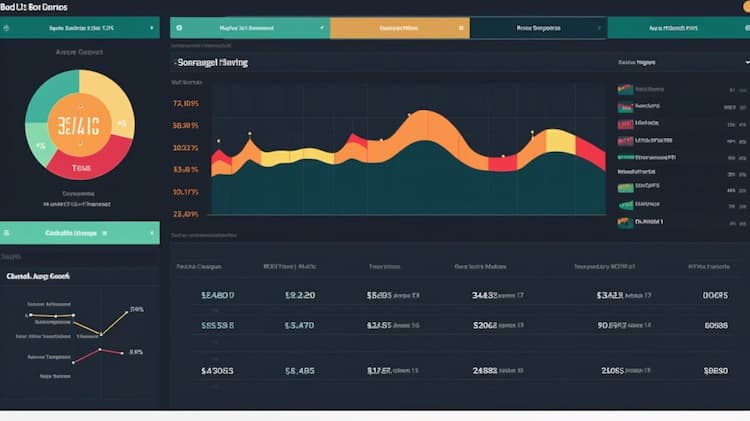
SPY VS IWM
Exchange-Traded Funds (ETFs) have transformed the landscape of investing, providing a convenient and diversified way to gain exposure to various sectors and asset classes. In this article, we will conduct an in-depth analysis of two popular ETFs: SPY (SPDR S&P 500 ETF Trust) and IWM (iShares Russell 2000 ETF). We'll delve into key aspects such as ETF tickers, full names, issuers, sectors, top holdings, capitalization, strategy, tracking methods, and exposure.
SPY & IWM: Overview
SPY and IWM are two ETFs that offer distinct strategies within the realm of U.S. equities. While SPY aims to replicate the performance of the S&P 500 Index, IWM focuses on tracking the Russell 2000 Index, which represents small-cap stocks. Understanding these strategies is crucial for investors looking to align their investments with specific market segments.
SPY & IWM: Sectors and Top Holdings
The SPY ETF is renowned for its broad exposure to large-cap U.S. companies across various sectors such as technology, healthcare, finance, and consumer goods. In contrast, IWM focuses on smaller companies, often spanning sectors like industrials, consumer discretionary, and materials. Diving into the sectors and top holdings of these ETFs provides insights into their potential strengths and vulnerabilities.
 SPY overlap SPY VS IWM
SPY overlap SPY VS IWM
SPY & IWM: Capitalization and Strategy
As one of the largest ETFs globally, SPY boasts a substantial asset under management (AUM), indicating its popularity among investors seeking broad market exposure. On the other hand, IWM's strategy revolves around offering investors exposure to the performance of smaller companies in the U.S. market. The difference in capitalization and strategy between SPY and IWM leads to varying risk profiles and potential returns.
SPY & IWM: Tracking Methods and Exposure
SPY's primary goal is to closely replicate the performance of the S&P 500 Index, which is composed of 500 large-cap U.S. stocks. IWM, conversely, provides exposure to the Russell 2000 Index, consisting of around 2,000 small-cap companies. The tracking methods employed by these ETFs are pivotal in understanding how closely they mirror their respective benchmarks, and investors should consider these nuances when selecting their investment vehicles.
Conclusion
SPY and IWM offer distinct avenues for investors seeking exposure to different segments of the U.S. equity market. To gain a comprehensive understanding of the holdings, correlations, overlaps, and other crucial insights, investors can rely on ETF Insider—a user-friendly app that provides an array of information about various financial instruments. Whether you're a seasoned investor or just starting your investment journey, utilizing tools like ETF Insider can empower you to make well-informed decisions.
Disclaimer: This article is intended for informational purposes only and does not provide any investment advisory services. Always conduct thorough research and consider seeking professional advice before making investment decisions.
Sources:
SPDR S&P 500 ETF Trust (SPY) Official Website
iShares Russell 2000 ETF (IWM) Official Website
S&P Dow Jones Indices: S&P 500 Index
FTSE Russell: Russell 2000 Index
SPY quote and analysis
Discover the top holdings, correlations, and overlaps of ETFs using our visualization tool.
Our app allows you to build and track your portfolio.
To learn more about the SPY SPDR S&P 500 ETF Trust, access our dedicated page now.
FAQ
Why is SPY better than IWM?
SPY may be considered better than IWM for some investors due to its specific focus, offering diversification.
Does IWM beat SPY?
IWM's performance relative to SPY will vary over time, depending on market conditions.
Should I invest in SPY or IWM?
The choice between SPY and IWM should align with your investment goals, risk tolerance, and desired exposure.
Are SPY and IWM good investments?
Both SPY and IWM can be suitable investments depending on individual investment strategies, goals, and risk profiles.
What is the correlation between SPY and IWM?
The correlation between SPY and IWM can vary over time, reflecting differences in performance.










